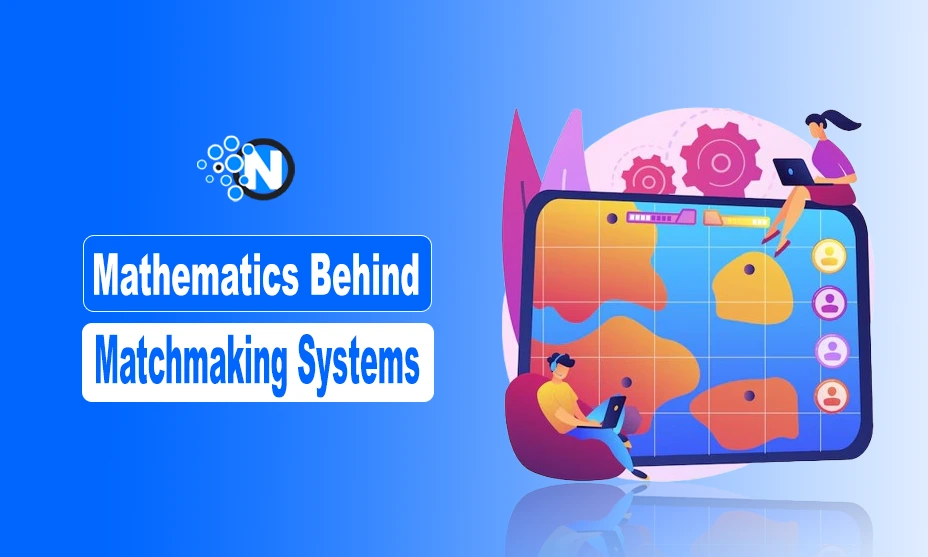The Mathematics Behind Matchmaking Systems That Keep You Playing

“The find match” option in favorite video games triggers a sophisticated mathematical algorithm that simultaneously looks for opponents while stimulating player close fit and future game return.
The simple concept of matchmaking depends on computational algorithms alongside psychological frameworks, together with statistical prediction models, which game developers have created over many years.
In this blog post, I will discuss the mathematics behind matchmaking systems in games that keep you playing.
Let’s start!
What is Matchmaking in Gaming?
Matchmaking in gaming is the process of pairing players together in online multiplayer games. It’s designed to create competitive matches based on different factors like skill level, experience, connection quality, and game mode preferences.
Game developers use advanced algorithms to make matchmaking efficient and enjoyable. However, some players think that skill-based matchmaking makes games too competitive or less fun.

The Evolution of Digital Matchmaking
Traditional matchmaking techniques in games were limited to random placement or basic factor-based matching, like computer-processing speed, at their origin. Modern matchmaking platforms represent engineering achievements through mathematical operations. The system utilizes dozens of variables to perform analysis in short periods that developers believe produce the most suitable match.
The first digital competition to use advanced matchmaking algorithms was introduced in online poker through bankroll and betting pattern assessment. That was designed for creating tables that players could win at while facing appropriate challenges. The first gaming systems understood that players best respond to gameplay that offers between 50% and 60% realistic success potential. The perfect balance of achievable difficulty compared to unfavorable odds generates exceptional conditions for maintained participant interest.
Online poker was one of the first competitive digital environments to implement an advanced matchmaking system, using players’ bankrolls and betting patterns to create tables where players felt challenged and capable of winning, and that goal remains the same today.
The Elo Rating System: Chess Logic in Gaming
Professor Arpad Elo created the Elo rating system for chess contests, which modern systems use as their foundation for matchmaking methods. When players win matches, their points increase through the mathematical model, but losing results in diminished points according to this system. Each system determines player rating point adjustments through the evaluation of positions recorded from the players.
A chess player receives limited score points when they defeat opponents of an inferior rank with winning results that exceed prediction expectations. Evaluations take place mostly after underdog players achieve successful wins since such achievements break conventional match expectations. A player reaches his genuine skill potential by understanding that their rating point reveals the exact time they achieve matched performance in games.
The core system developed for game projects enables developers to incorporate team gameplay aspects and original game mode mechanics for their projects. A specific tracking system enables the assessment of skills through accuracy-based measurement, strategic performance, and teamwork analytics to develop comprehensive skill profiles.
Beyond Skill: The Hidden Variables
Developer platforms heavily rely on skill matching, but they increase the implementation of various factors that significantly shape player interactions. A good connection function stops lagging from becoming frustrating for players, besides behavioral metrics helping in matching kind players to each other and separating detrimental players. Several systems analyze players’ style through advanced algorithms to create more harmonious team pair-ups. Aggressive players receive partnerships with opposing play styles.
The most captivating components involve time-related variables. The tracking system monitors when and how long players usually play their games before making changes to match them within their preferred time frames. The system generates easier matchups during the last part of Tuesday evening games to ensure players finish the session with a win encouraging return for the next week.
Technical experts would find these complex mathematical processes for temporal modification based on time-series data impressive. The analysis of numerous player sessions helps developers detect patterns that signal player disengagement so that the system can intervene through an algorithm to stop that from happening.
Engagement-Optimized Matchmaking
At present the most sophisticated matchmaking platforms utilize “engagement-optimized matchmaking” (EOMM) since skill matching alone no longer satisfies modern player retention requirements. The systems leverage extensive databases through machine learning algorithms to calculate match-ups that deliver the highest engagement durations.
Advanced mathematics applied in this context consists of predictive modeling, multiple neural networks, and game theory principles. A system studied by Electronic Arts pushed player engagement upward by 8% through predictions of future player actions rather than traditional skill matching methods.
The system functions by avoiding traditional questions about finding a match opponent comparable to a player. The EOMM system determines which competition will deliver maximum enjoyment and future game participation for the athlete at hand.
When the system determines it is the best approach, it either makes players overcome challenging gameplay modes or it provides them with quick, easy victories following a string of defeats. Through the process of player behavior analysis, the system develops better knowledge about how each player type prefers to experience engagement.
The Controversy of Manipulative Design
Advancements in matchmaking systems lead to moral considerations about their designed capabilities. Critics accuse engagement-optimized systems of gaming player experiences through strategically crafted win-loss patterns which generate artificial dopamine reactions to maintain player in-game persistence and money-spending actions.
Few gaming participants believe developers program their matchmaking system to perform “scripted” gameplay by developing artificial challenges that pressure users to buy in-game assets. Major gaming companies have filed patents that describe matchmaking systems that connect players through their spending activities and their probability of purchasing after losing.
This debate stems from value optimization models, which determine a player’s perfect gameplay order to achieve maximum life value for the company. The commercial interests of matchmaking algorithms combine engagement optimization with profit maximization to reach this stage.
The Future: Personalized Experience Engines
Matchmaking mathematics advances further than its core function of gaming opponent selection. Future systems will transform into experience engines that organize all elements of player gameplay during games. These systems use modern Artificial Intelligence methods, specifically reinforcement learning, to perform ongoing real-time optimizations for player experiences.
A system exists that pairs rival players with suitable opponents while making continuous controller and storytelling changes according to each person’s gameplay habits. Such systems would require mathematical solutions that maintain immediate pleasure alongside enduring contentment, alongside challenging gameplay, alongside skill building throughout the game period.
A few versions of this system implementation are already functional in single-player modes, which modify their challenge parameters according to the player’s abilities. Competitive multiplayer systems will progress when they implement the level of player-specific matchmaking capabilities.
In Closing
The development of matchmaking mathematics progressed from basic skill evaluation to sophisticated multi-dimensional procedures that focus on game enjoyment, together with revenue generation success. Programming experts implement algorithms representing detailed knowledge about human psychology to control daily experiences for numerous gaming participants.




